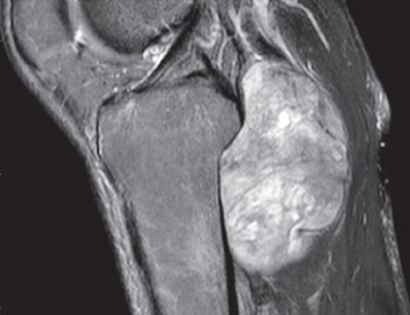Popliteal Fossa Excision (Back of Knee)
It is a procedure that involves removing a tumor (usually malignant or benign aggressive) of the posterior knee compartment (back of knee) while preserving the surrounding bone and soft tissues.

It is a procedure that involves removing a tumor (usually malignant or benign aggressive) of the posterior knee compartment (back of knee) while preserving the surrounding bone and soft tissues.

The popliteal fossa compartment (back of knee) is a relatively rare location for musculoskeletal tumors (soft tissue or bone tumors) to arise. The popliteal space is diamond-shaped; on its superior aspect, it is bounded by the semimembranosus, semitendinosus, and biceps femoris muscles (hamstring muscles). It also involves the gastrocnemius muscle (calf muscle). Some of the most common types of soft tissue tumors that arise in this site include lipomas and low-grade liposarcomas. High-grade soft tissue sarcomas may adhere to some of the vascular structures (veins and arteries) and require careful dissection and preservation of the popliteal vessels (arteries and veins). About 90% of soft tissue sarcomas arising in the popliteal fossa (back of knee) can be resected and treated adequately by a limb-sparing surgery. In some instances the extremity cannot be saved and an above-knee amputation is performed.
Contraindications for saving the limb may include neurovascular invasion, infection, pathological fracture, extensive disease, involvement of the tumor into adjacent bone (nearby bone) contamination from a poorly performed biopsy, recurrent disease.


An S-shaped incision is made as seen in the image. This allows the major vessels to be identified. An ultrasound made be utilized to find the major vessels and prevent damage.



Developing surgical planes (margins that are tumor free) and separating muscles that can be preserved and leaving those in continuity with the tumor that should be removed. This is based on preoperative MRI and intraoperative findings as well as the type of tumor.

If necessary, the major blood vessels and nerves are identified and dissected along with the tumor if they are embedded in the tumor mass.

In the case of this image, the tumor was detached and fully removed using the soleus muscle. The gastrocnemius muscles were detached in order to fully take out the tumor.

In cases that require vascular and muscular reconstruction, the heads of the gastrocnemius (top portion of the muscle in your calf) are sutured to each other and to the hamstrings (muscles in back of thigh) to form a uniform muscle layer that covers the popliteal space. This wound closure technique minimizes the occurrence of deep wound infection by forming a muscular (muscles) barrier between the skin incision and popliteal space.

We then close your incision with sutures and cover the surgical site with bandages. Multiple large drains may also be used to drain the surgical site and prevent a seroma (buildup of fluid).

An MRI of the popliteal tumor is seen here. in the back of the knee, the tumor is the brightened image (right hand side of the image).

Once the tumor is properly removed, the defect (space where tumor was involved) may be filled depending on the size of the tumor and if vascular (veins and arteries) reconstruction was warranted.
After your surgery you will spend a few nights in the hospital and then will be recuperating at home. Various pain protocols and nerve blocks are used to minimize pain. Mostly all patients are very comfortable after the surgery. For the first few days you will ice the area and keep it elevated to reduce swelling. You will return to the office 2 weeks after surgery. Once cleared, you will subsequently start physical therapy. We usually prescribe specific physical therapy protocols 3 times a week for 12 weeks after surgery to gradually strengthen muscles. Strengthening with significant resistance after sufficient range of motion is achieved as determined by Dr. Wittig. There may be an ultimate weight limit imposed upon you depending on various factors.
You will be monitored periodically with MRI imaging over the course of 5 years to ensure there are no signs of recurrence. You will have follow up appointments every 4 months for the first 2 years, then every 6 months for the next 2 years, and then once a year. Since the integrity of the limb has been restored to full or almost full, recovery is anticipated provided the patient adheres to strict physical therapy.

Dr. James Wittig narrates a video illustrating the surgical technique for resection of a tumor of the popliteal fossa. | WATCH VIDEO